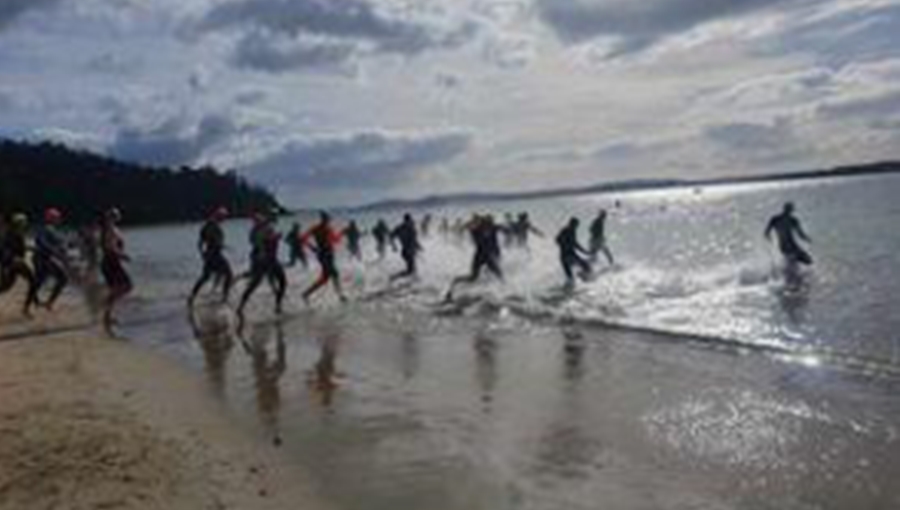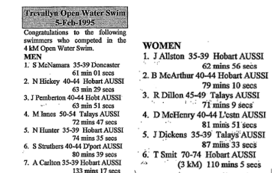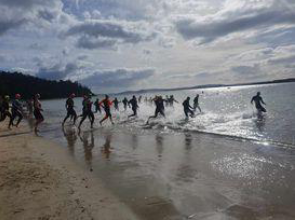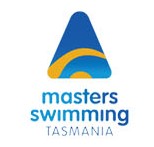
Lost: the History of Masters Open Water Swimming
In recent years, open water swimming in Tasmania has experienced a resurgence in popularity sparked in part by pool closures during Covid restrictions. However, sadly we have lost much of the history of this activity by Masters swimmers in Tasmania. A trawl through the MST archives suggests that there has been significant activity in open water events over the years but little of it has been recorded. We cannot help but wonder why that was the case – were these events not valued or not considered worthy of being recorded? We would love to know more – who was it that organised these events, who participated, and how were they run, and it would be great to see any pictures that people may have. So, let’s have a look at the little we DO know.
Some of the earliest recorded open water swimming events in Tasmania were conducted by Regatta associations. Swimmers would gather at popular beach destinations, such as Sandy Bay and Kingston Beach, and participate in races ranging from short sprints to long-distance challenges. For example, the 15 km course from Kingston Beach to Constitution Dock Hobart was once used as the Australian Championship race. Some of these Regatta swims continue today. One is the 1.5 klm Trans Derwent Royal Hobart Regatta Race, which is the second oldest continuously run race in Australia, and popular with MST members.

MST (formerly AUSSI Tas) started with one club in Launceston in 1979. The then Launceston AUSSI Masters Swimming Club (now Launceston Lemmings) conducted the first Masters Open Water swimming event on Australia Day in 1987 at Lake Trevallyn. This was in conjunction with the Launceston Swimming Centre. At the time, Swimming Centre Superintendent, Paul Gambles hoped ‘the event [would] be seen as being in the spirit of a fun-run, where entrants compete at all levels of ability’. Results of these swims are scant, but some familiar names can be seen in this 1995 results list – one of the few that appears in the club’s Annual Reports:

Open water swimming was obviously a key activity for the Lemmings, and the Club’s 2006 Annual Report recalled a ‘shared purchase with AUSSI Tasmania of inflatable buoys for the conduct of some open water swims. Judging by the response we have every opportunity to develop a strong open water program.’
In 2010 the Club commented that ‘open water swims continued, organised by Ray Brien, [and] have been a great success with many members participating at various venues – tides etc. permitting’.
The Lake Trevallyn swim was held in 2011, but it is unclear when, if, or why the event was suspended, where the other events were conducted, and even where those buoys are today!

Ocean swimming was just as popular along the coast. In their 2000 Annual Report, the Burnie Club specifically thanked their coach Gavin Singleton for the time he dedicated to their open water training sessions.
In the south, Masters swimmers frequently participated in the Hobart and Nubeena regattas. In 1991, the Hobart Aquatic Centre club remarked that ‘the Nubeena regatta is a great ‘fun’ event, the ‘cross the bay’ swim being about 400 metres’. At about the same time open water swims were held regularly at Kettering. In 1992, the Hobart AUSSI Masters Club (later Hobart Dolphins) commended the ‘very successful open water swim [that] was conducted at Kettering, in which 43 swimmers competed over a 2.5 km course’.
However, in 1994, apparently due to pollution problems in the Derwent River, a new 2.5 klm event at Carlton Beach was co-hosted by the Hobart AUSSI Masters and Carlton Park Surf Lifesaving clubs. Organiser Ron Bloomfield hoped that the water temperature might rise to 18 degrees in time for the event therefore making wetsuits unnecessary for swimmers.

John Pemberton, Tina Smit and Julia Allston preparing for the 1994 Carlton Beach swim.
Despite the pollution worries, the Kettering swim continued for some time and was later hosted by Talays club. Yet their 1997 Annual Report noted that ‘regrettably, we had to end our association with the popular Kettering open water swim. However, our members continue to compete at this event’. Why did this dissociation occur? Was it just the pollution issue or were there other factors?
While open water swimming in a Tasmanian winter is not for the faint-hearted there is a growing number of Masters swimmers doing it. The island’s stunning land and seascapes are highly desirable for swimmers looking for unique and challenging experiences. The activity has come a long way and has evolved into a sport that celebrates the island’s natural beauty and challenges swimmers to push their boundaries. Tasmania continues to be a haven for open water swimmers, ensuring that the sport will thrive for years to come.
Do you have any memories/stories/pictures of these and other early open water events? Please share with us at mastersswimmingtasmania@gmail.com


